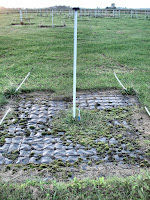Date: 25,26, 27 Aug. 2017
Logger: HRD V5
Station: Icom IC-706MK2G at 10W
Antenna: Coppertape vertical (7,1m) @9m agl
Total km: 191036
At first IV3FPX Boris mentioned I noted the wrong dates for this weekend. Sorry for that it has been corrected immidiatly. Friday was day one of the JT9 activity days this weekend. And indeed there was a lot of activity but I didn't see it when I hastely switched on the station equipment this morning. At lunchbreak I logged in via remote from my job and noticed almost no stations at all been received on JT9, only a few russians with very low reports. Strange, I switched over from JTDX to WSJT-X to see if it was a software problem. Nothing.... Switched over to FT8....signals enough but the software did no single decode!!! Then it occured to me it might be a radio problem, and it was. The radio was on LSB? Why? I don't know? It has been weeks ago I turned on the radio so I guess I left it on LSB, the strange thing was that it was on LSB on all bands. I had to switch back to USB. The problem was solved then but I lost valuable time I rather spend on making QSOs. Anyway I tested with 2 QSOs and saw a lot of activity so I just had to wait to get home from the job to continue.
 |
| Sunday evening spots after I stopped |
 |
| Map of my QSOs |














